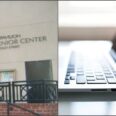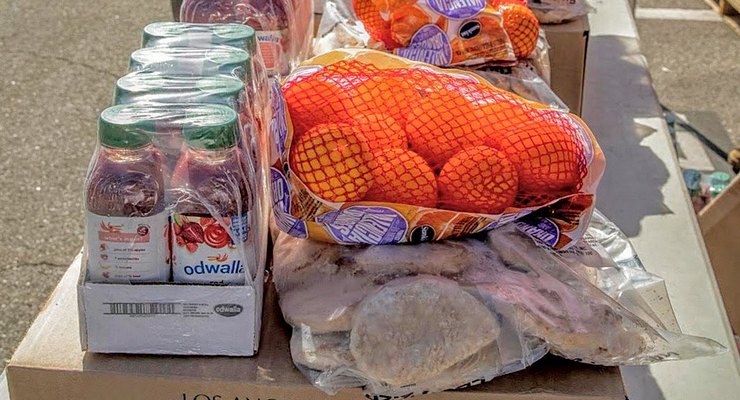
This week, the City Council adopted this year’s Capital Improvement Program. It contained nearly half a billion dollars in new funding for Pasadena’s infrastructure needs. But it leaves unfunded $2 billion of future investment needed to keep our community safe, sustainable and prosperous.
Pasadena has a remarkable record of investing in its infrastructure in recent decades. The Convention Center has been expanded and City Hall brought up to current seismic safety standards. Voters just approved a $200 million bond issue to retrofit and reopen our Central Library.
Yet we are an older city, with an aging infrastructure. There are storm clouds on the horizon. Climate change means a hotter and drier future, with increased dangers of drought, fires and heat waves. The erratic and reckless policies coming out of Washington have rocked the world economy and threatened drastic cuts in Federal funding for local infrastructure. A slowing economy and continuing inflation are hitting resident’s wallets at the same time as the City is increasing water, sewer and trash fees.
The capital plan Council adopted for this year has no money for replacing fire stations that are over half a century old and need replacing to meet modern seismic, equipment and facility standards. Nor does it include money for street safety improvements. Road maintenance funding is actually reduced.
Putting off maintenance and repairs will only mean higher costs down the road. Last week, our Public Works Director told the Council he would need $75 million this year to bring our streets back up to optimum standards. Delaying even a few years would boost the cost to $105 million.
Given the tremendous backlog of deferred maintenance and future needs, Pasadena must develop a serious plan for how to tackle the rising imperative of capital investment.
There are just four ways to pay for the $2 billion in unfunded needs: raise taxes and fees on residents and businesses; reduce City operating expenses to shift money to capital spending; secure grants from the County, State or Federal governments; or grow our local revenue base by investing in making Pasadena a more prosperous and attractive place to live, work and visit.
We know how residents feel about the first option. Having recently voted for construction bonds for the library, the school district and PCC, there is little appetite for asking them for yet higher taxes and fees. Reallocating funding from the City’s operating budget will be challenging without fundamental change to community expectations for services. The County, State and Federal governments are all in fiscal stress which will severely limit opportunities for grants.
Given the magnitude of the $2 billion challenge and the obstacles to the other options, it’s frustrating that we aren’t actively pursuing the fourth option: growing our tax base by investing in placemaking.
We have a dramatic success story to draw on. Old Pasadena was once a nearly abandoned downtown, with second-hand stores, dive bars and empty storefronts. Determined to turn it around, the City made major investments in parking structures, alley upgrades, safety improvements and beautification. The results have been dramatic, turning a place locals and visitors avoided into some of the most valuable real estate in Southern California. In less than 20 years, the area’s property taxes tripled and sales tax revenue quadrupled. Businesses thrived, generating new jobs and sparking a boom in nearby housing construction.
Yet other parts of Pasadena languish with empty stores, offices and parking lots. Why aren’t we using the success of Old Pasadena as the template to invest in Lincoln Avenue, North Fair Oaks, East Colorado and North Lake?
Admittedly, we no longer can use redevelopment to finance such investments. But there are new vehicles to underwrite strategic public improvements to leverage private investment. Making an area safe, walkable and attractive is the best way to bring people to work, shop and live in these undervalued corridors.
The City has spent millions of dollars over the last decade on gorgeous and ambitious plans for these neglected commercial districts. There are glittering promises of street trees, wider sidewalks, plazas, paseos, parklets, public art and traffic calming. Yet despite all the time and effort lavished on these visions, not a dime was allocated this year to actually implementing them.
We can’t afford to make these investments all at once. But we also can’t afford to not make them at all.
Previous generations invested in Old Pasadena, South Lake and the Playhouse District. We need to be investing in the rest of our city in order to generate new businesses, new employment, and new tax revenue to help pay for keeping our city secure, green and well-maintained.
Before the City Manager presents his capital spending budget next year, we need a vigorous public discussion of how we are going to fund our long-term capital shortfall, including public investment in placemaking. Our Council, Commissions and residents must take a hard look at the needs, priorities and options for funding. We inherited a great city based on the foresight and investment of those who came before us. It’s our turn to leave our children and grandchildren a legacy of a city that thrives even in the face of growing challenges.
Rick Cole represents Council District 2 and also serves as the Chief Deputy Controller for the City of Los Angeles. He was Mayor of Pasadena during the early years of Old Pasadena’s revival.


















